Instrument Engineer
20+ Instrument Engineer Interview Questions and Answers for Freshers

Asked in Tata Projects

Q. 1.General current and voltage working ranges of instruments. 2. Temperature sensors types and working principals. 3. Suitable for working hours or not. 4. General questions related to purpose of instruments req...
read moreQuestions related to general working ranges, temperature sensors, and purpose of instruments for Instrumentation Engineer position.
General current and voltage working ranges of instruments depend on the type of instrument and its application.
Temperature sensors types include thermocouples, RTDs, thermistors, and infrared sensors.
Thermocouples work on the principle of Seebeck effect, while RTDs work on the principle of change in resistance with temperature.
Instruments may or m...read more
Asked in Om Electrical

Q. Why do we calibrate instruments?
Calibration of instruments ensures accuracy and reliability of measurements.
Ensures accuracy and reliability of measurements
Helps in maintaining quality standards
Prevents errors in readings
Increases instrument lifespan
Compliance with regulations and standards
Examples: calibrating a thermometer for accurate temperature readings, calibrating a pressure gauge for precise pressure measurements
Asked in Om Electrical

Q. Why is a 3-Wire RTD preferred over a 2-Wire RTD?
3Wire RTD is preferred over 2Wire RTD due to better accuracy and noise reduction.
3Wire RTD compensates for lead wire resistance, resulting in more accurate temperature measurements.
3Wire RTD provides better noise reduction compared to 2Wire RTD.
3Wire RTD allows for easier implementation of temperature compensation techniques.
2Wire RTD is more susceptible to lead wire resistance errors and noise interference.
Asked in Om Electrical

Q. What is half-duplex communication?
Half duplex communication allows data to be transmitted in both directions, but not simultaneously.
Data can be sent and received, but not at the same time
Common examples include walkie-talkies and CB radios
Requires a switch between sending and receiving modes
Asked in Om Electrical

Q. What is the purpose of using a PLC?
PLCs are used for automation of industrial processes, such as controlling machinery and equipment.
PLCs are used to automate processes in industries such as manufacturing, automotive, and food processing.
They can control machinery, equipment, and processes by receiving input from sensors and other devices.
PLCs can be programmed to perform specific tasks, such as turning on/off motors, regulating temperature, and monitoring production lines.
They help improve efficiency, reduce ...read more

Asked in Al Ansari Trading Enterprise LLC

Q. What types of calibration have you performed before?
There are different types of calibration that can be done depending on the instrument being used.
Zero calibration
Span calibration
Linearity calibration
Sensitivity calibration
Temperature calibration
Humidity calibration
Pressure calibration
Instrument Engineer Jobs
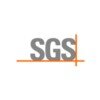

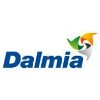
Asked in Om Electrical

Q. What is the difference between an AC drive and a DC drive?
AC drives use alternating current to control the speed of an electric motor, while DC drives use direct current for the same purpose.
AC drives are more commonly used due to their ability to provide variable speed control and energy efficiency.
DC drives are simpler in design and are often used in applications where precise speed control is required, such as in cranes or elevators.
AC drives are typically more cost-effective and easier to maintain compared to DC drives.
Examples ...read more
Asked in Slns Engineering & Constructions

Q. What is instrumentation?
Instrumentation is the science and art of measurement and control of process variables within a production or manufacturing area.
Instrumentation involves the use of sensors, transmitters, controllers, and final control elements to monitor and control processes.
Examples of instrumentation include pressure gauges, temperature sensors, flow meters, and control valves.
Instrumentation plays a crucial role in ensuring the efficiency, safety, and quality of industrial processes.
Share interview questions and help millions of jobseekers 🌟

Asked in Om Electrical

Q. What is Lead Resistance?
Lead resistance is the resistance encountered in the electrical leads connecting a sensor or instrument to a measuring device.
Lead resistance can affect the accuracy of measurements by introducing additional resistance in the circuit.
It is important to account for lead resistance when designing and calibrating instrumentation systems.
Lead resistance can be minimized by using high-quality, low-resistance leads.
Examples of instruments where lead resistance is a concern include ...read more
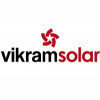
Asked in Vikram Solar

Q. What is the full form of RTD and provide a brief description?
RTD stands for Resistance Temperature Detector. It is a temperature sensor that operates on the principle that the resistance of a metal increases with temperature.
RTD is commonly used in industrial applications for temperature measurement.
Platinum is a popular material for RTDs due to its high accuracy and stability.
RTDs are known for their high accuracy and repeatability compared to other temperature sensors.
RTDs are commonly used in industries such as oil and gas, chemical...read more
Asked in Om Electrical

Q. Various types Communication protocol
Various types of communication protocols include Modbus, Profibus, HART, Foundation Fieldbus, and Ethernet/IP.
Modbus - commonly used in industrial automation
Profibus - used in process automation
HART - for smart field devices
Foundation Fieldbus - for process control
Ethernet/IP - for industrial Ethernet communication

Q. What is hydraulic and pneumatic pressure?
Hydraulic pressure is the force exerted by a fluid in a closed system, while pneumatic pressure is the force exerted by a gas in a closed system.
Hydraulic pressure is generated by the movement of a liquid, such as oil, in a confined space.
Pneumatic pressure is created by the compression of a gas, such as air, in a closed system.
Both types of pressure are used in various industrial applications, such as in hydraulic systems for heavy machinery or pneumatic systems for air tool...read more
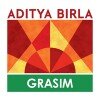
Asked in Grasim Industries

Q. Pressure temperature flow level
Pressure, temperature, flow, and level are key parameters in instrumentation engineering.
Pressure is the force exerted by a fluid on its container, measured in units like psi or bar.
Temperature is the degree of hotness or coldness of a substance, measured in units like Celsius or Fahrenheit.
Flow is the rate at which a fluid passes through a system, measured in units like liters per minute.
Level is the height of a substance in a container, measured in units like meters or feet...read more

Asked in Reliance Industries

Q. mentioned Standard maintenance procedure for instruments
Standard maintenance procedures for instruments involve regular inspections, calibrations, and repairs to ensure optimal performance.
Regularly inspect instruments for any signs of wear or damage
Calibrate instruments according to manufacturer's guidelines
Perform routine maintenance tasks such as cleaning and lubricating
Keep detailed records of maintenance activities for each instrument
Train staff on proper instrument maintenance procedures
Schedule preventive maintenance to avo...read more
Asked in Droidal

Q. What is Automation?
Automation is the use of technology to control and monitor processes, reducing human intervention.
Automation involves the use of control systems to operate equipment and machinery.
It aims to increase efficiency, productivity, and safety by minimizing human error.
Examples include automated manufacturing processes, smart home systems, and self-driving cars.
Asked in Om Electrical

Q. Network topology types
Network topology types refer to the layout of a computer network and how different devices are connected.
Common types include star, bus, ring, mesh, and hybrid topologies
Star topology has a central hub with all devices connected to it
Bus topology uses a single cable to connect all devices in a linear fashion
Ring topology connects devices in a circular manner
Mesh topology has each device connected to every other device
Hybrid topology is a combination of two or more different t...read more


Q. What is the full form of SCADA?
Supervisory Control and Data Acquisition
SCADA stands for Supervisory Control and Data Acquisition
It is a system used for monitoring and controlling industrial processes
SCADA systems are commonly used in industries such as power plants, water treatment facilities, and manufacturing plants
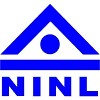
Asked in Neelachal Ispat Nigam

Q. What is a DP transmitter?
A dp transmitter is a device used to measure the difference in pressure between two points in a system.
Measures differential pressure in a system
Consists of two pressure sensors connected to a diaphragm
Used in industries like oil and gas, chemical, and pharmaceuticals

Asked in Neelachal Ispat Nigam

Q. What is a flow transmitter?
A flow transmitter is a device used to measure the flow rate of a fluid in a pipeline or system.
Flow transmitters can be used in various industries such as oil and gas, water treatment, and pharmaceuticals.
They typically work by measuring the velocity of the fluid and calculating the flow rate based on the cross-sectional area of the pipe.
Common types of flow transmitters include electromagnetic, ultrasonic, and thermal mass flow meters.
Flow transmitters are essential for mon...read more

Asked in Quess

Q. What is a control valve?
A control valve is a device used to regulate the flow of a fluid in a process system by varying the size of the flow passage.
Control valves are essential components in process control systems.
They can be operated manually or automatically.
Control valves can be used to control variables such as flow rate, pressure, temperature, and level.
Examples of control valves include globe valves, butterfly valves, and ball valves.

Asked in Baramati Agro

Q. What is meant by calibration?
Calibration is the process of comparing measurements of an instrument to a known standard to ensure accuracy.
Calibration involves adjusting the instrument to match the standard.
It is important for maintaining accuracy and reliability of instruments.
Calibration is typically done regularly to ensure consistent performance.
Examples include calibrating a thermometer to ensure accurate temperature readings.
Calibration may also involve adjusting settings or parameters of an instrum...read more

Asked in Triune Energy Services

Q. How do you manage the frequency of your communication?
Control on frequency of dialogue is important to ensure effective communication and avoid overwhelming the listener.
Be mindful of the pace at which you speak
Pause periodically to allow the listener to process information
Avoid speaking too fast or too slow
Adjust your tone and volume to maintain engagement

Asked in Tata Steel

Q. What is a thermocouple?
A thermocouple is a temperature sensor that consists of two different metals joined together at one end.
Consists of two different metals joined together at one end
Generates a voltage proportional to the temperature difference between the two ends
Commonly used in industrial temperature measurement applications

Asked in Neelachal Ispat Nigam

Q. What is a transmitter?
A transmeter is a device used to measure and transmit data from sensors to a control system.
Transmeters are commonly used in industrial processes to monitor variables such as temperature, pressure, flow, and level.
They convert the physical quantity being measured into an electrical signal, which is then transmitted to a control system for monitoring and control.
Examples of transmeters include pressure transmitters, temperature transmitters, flow transmitters, and level transm...read more
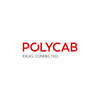
Asked in Polycab Wires

Q. What is resistance?
Resistance is the opposition to the flow of electric current in a circuit.
Resistance is measured in ohms (Ω).
It is caused by the collisions of electrons with atoms in a conductor.
Higher resistance leads to lower current flow in a circuit.
Examples of resistors include light bulbs, heating elements, and electronic components.
Ohm's Law states that V = I * R, where V is voltage, I is current, and R is resistance.

Asked in ThyssenKrupp System Engineering

Q. Load cell specification
Load cell specification includes capacity, accuracy, material, and output signal.
Capacity: Specifies the maximum load the cell can measure, usually in pounds or kilograms.
Accuracy: Indicates how precise the load cell can measure the load, often expressed as a percentage of full scale.
Material: Determines the durability and compatibility of the load cell with the environment it will be used in.
Output Signal: Describes the type of signal the load cell produces, such as analog v...read more
Asked in VSAN Groups

Q. Types of flow meters
Flow meters are devices used to measure the flow rate of a fluid in a pipe or conduit.
Differential pressure flow meters
Ultrasonic flow meters
Magnetic flow meters
Vortex flow meters
Coriolis flow meters
Turbine flow meters
Positive displacement flow meters

Asked in ThyssenKrupp System Engineering

Q. AB PLC specification
AB PLC is a programmable logic controller manufactured by Allen Bradley.
AB PLCs are widely used in industrial automation for controlling machinery and processes.
They come in various models such as CompactLogix, ControlLogix, MicroLogix, etc.
AB PLCs use ladder logic programming for creating control logic.
They have digital and analog input/output modules for interfacing with sensors and actuators.
AB PLCs can communicate with other devices using protocols like Ethernet/IP, Modbu...read more
Interview Experiences of Popular Companies



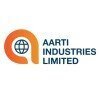

Top Interview Questions for Instrument Engineer Related Skills

Calculate your in-hand salary
Confused about how your in-hand salary is calculated? Enter your annual salary (CTC) and get your in-hand salary


Reviews
Interviews
Salaries
Users










